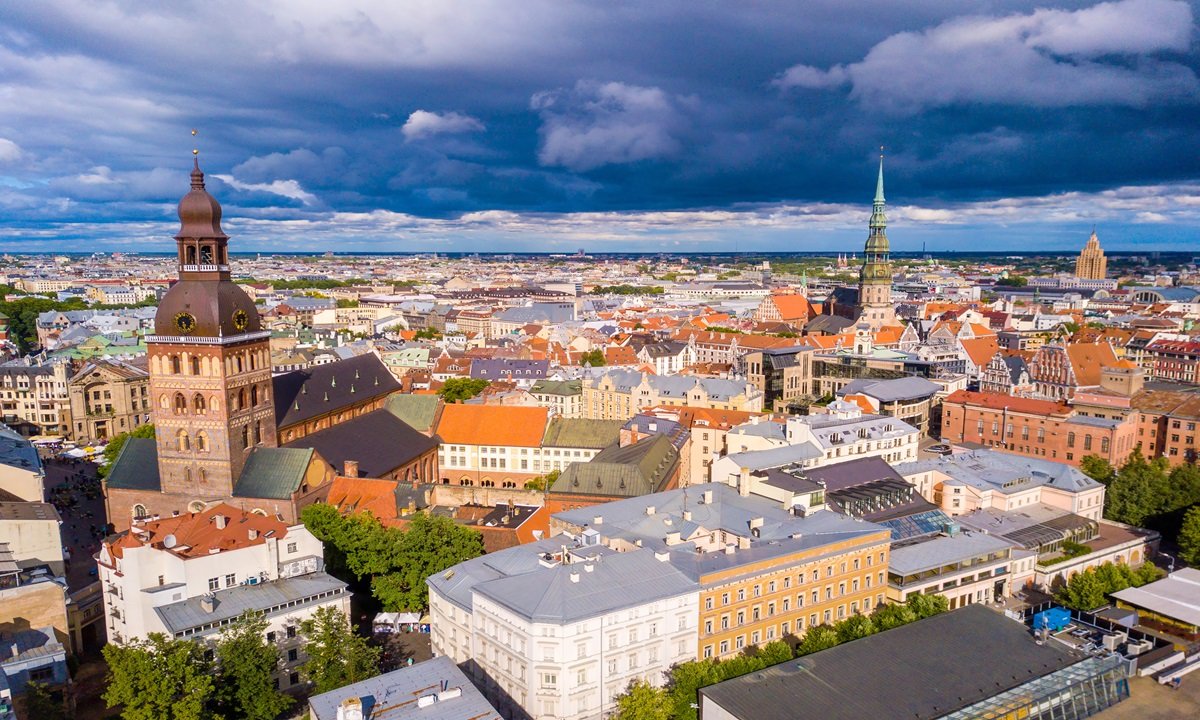Most travelers dream of wandering through the charming streets of Paris or tossing coins into the Trevi Fountain in Rome. But if you’re looking to escape the crowds and discover something new, this guide to the best underrated European cities to visit in 2025 is for you. These hidden gems are rich in history, bursting with culture, and often far easier on the wallet. From lesser-known capitals to off-the-radar towns, we’ll help you explore Europe’s best-kept secrets that deserve a spot on your travel bucket list.
In this guide, we’ll explore top 10 best underrated European cities to visit, each offering a unique experience that rivals more famous hotspots. These cities are perfect for curious explorers, budget-conscious travelers, and anyone seeking authenticity over crowds.
Table of Contents
ToggleWhy Choose Underrated European Cities to Visit?
Let’s face it—mainstream cities are fantastic, but they come with long lines, high prices, and selfie-stick chaos. On the other hand, underrated European cities let you:
- Connect deeper with local people and traditions.
- Spend less on accommodation, food, and experiences.
- Travel slower and smarter, soaking in real stories and scenery.
These hidden gems offer all the charm of Europe with none of the stress. From fairytale old towns to vibrant street markets, these places prove that popularity doesn’t always equal value.
1. Ljubljana, Slovenia
Nestled between the Alps and the Adriatic, Ljubljana is a green haven with storybook vibes. The city is small, walkable, and strikingly clean, with a cheerful river cutting through its center. Pedestrian-only streets, colorful architecture, and a young, creative energy make it a dream to explore.
Top Things to Do:
- Ljubljana Castle: Ride the funicular or hike up for city views.
- Tivoli Park: Perfect for a picnic or relaxed afternoon stroll.
- Metelkova Art Center: A quirky cultural zone filled with street art, live music, and alternative vibes.
Must-Try Food: Potica, a rolled pastry filled with walnut, poppy seed, or tarragon.
When to Visit: Late spring or early autumn, when the weather is perfect and tourist crowds are minimal.
Insider Tip: Rent a paddle boat or kayak on the Ljubljanica River for a unique view of the city.
2. Brno, Czech Republic
Brno is Prague’s lesser-known sibling—but that’s exactly its charm. It offers gothic cathedrals, secret tunnels, and buzzing nightlife minus the tourist rush. Plus, it’s the gateway to Moravian wine country.
Top Things to Do:
- Spilberk Castle: Once a fortress, now a museum with dramatic hilltop views.
- Villa Tugendhat: An icon of modernist architecture and a UNESCO World Heritage Site.
- Brno Ossuary: The second-largest ossuary in Europe, both eerie and fascinating.
Must-Try Food: Moravian Sparrow (roast pork with dumplings and sauerkraut) and local wine.
When to Visit: Spring and autumn offer mild weather and a lively cultural calendar.
Insider Tip: Don’t miss the Astronomical Clock at noon in Freedom Square—it’s… quirky, let’s say.
3. Ghent, Belgium
Ghent blends medieval architecture with a hip, youthful spirit. Unlike nearby Bruges, Ghent remains delightfully lived-in and vibrant. It’s also the vegetarian capital of Belgium!
Top Things to Do:
- Gravensteen Castle: A moated fortress smack in the city center.
- St. Bavo’s Cathedral: Home of the legendary Ghent Altarpiece.
- Friday Market Square: Ideal for people-watching and weekend buzz.
Must-Try Food: Waterzooi (creamy fish or chicken stew) and Cuberdon candies.
When to Visit: May to September, when the weather is great for canal tours and terrace hopping.
Insider Tip: Rent a bike and explore Ghent’s street art on the self-guided “Sorry, Not Sorry” tour.
4. Riga, Latvia
Riga, the Baltic jewel, is known for its striking Art Nouveau buildings, lively markets, and thriving café culture. It’s also one of the most budget-friendly capitals in Europe.
Top Things to Do:
- Art Nouveau District: Jaw-dropping architecture on every corner.
- Riga Central Market: One of Europe’s largest and most diverse food markets.
- Old Town: A UNESCO World Heritage Site packed with charm.
Must-Try Food: Grey peas with bacon and piragi (meat-filled buns).
When to Visit: June to August for long daylight hours and outdoor festivals.
Insider Tip: Head to the top of St. Peter’s Church for 360° views of the city and river.
5. Tirana, Albania
Colorful, chaotic, and full of soul—Tirana is a feast for the senses. It has undergone a vibrant transformation in recent years, offering street art, Soviet-style buildings, and warm hospitality.
Top Things to Do:
- Bunk’Art Museum: A Cold War bunker turned into a fascinating museum.
- Grand Park: A relaxing escape from the city buzz.
- Et’hem Bey Mosque: A peaceful oasis with intricate frescoes.
Must-Try Food: Fërgesë (a delicious dish of peppers, tomatoes, and cheese).
When to Visit: April to June or September to October to avoid summer heat.
Insider Tip: Take a cable car to Mount Dajti for stunning views over the city.
6. Valletta, Malta
Valletta, Malta’s honey-hued capital, is a baroque masterpiece surrounded by the Mediterranean Sea. It’s tiny but packed with culture, charm, and sunshine year-round.
Top Things to Do:
- St. John’s Co-Cathedral: Jaw-dropping art and architecture.
- Upper Barrakka Gardens: Sunset views over the Grand Harbour.
- Three Cities Tour: A scenic boat ride to historic neighborhoods.
Must-Try Food: Pastizzi (flaky pastries filled with ricotta or mushy peas).
When to Visit: March to May or September to November for pleasant weather and fewer cruise ship crowds.
Insider Tip: Explore on foot—Valletta is Europe’s smallest capital, and every corner is worth seeing.
7. Plovdiv, Bulgaria
Europe’s oldest continually inhabited city, Plovdiv is where ancient ruins meet hip cafes and street art. Its vibrant arts district and Roman amphitheater are must-sees.
Top Things to Do:
- Ancient Theater: Still in use for concerts and festivals.
- Kapana District: The creative heart of the city, full of color and energy.
- Ethnographic Museum: Insight into Bulgarian history and culture.
Must-Try Food: Banitsa (cheese pastry) and Shopska salad with rakia.
When to Visit: May to October for festivals and open-air performances.
Insider Tip: Time your visit for the Plovdiv Night of Museums and Galleries—a cultural treat!
8. Graz, Austria
Graz is the cool little sister of Vienna. It’s a design-forward city with Renaissance courtyards, world-class cuisine, and a laid-back vibe.
Top Things to Do:
- Schlossberg Hill: Hike or funicular your way up to the iconic clock tower.
- Kunsthaus Graz: A futuristic museum nicknamed the “Friendly Alien.”
- Old Town: A UNESCO site full of hidden courtyards and cafes.
Must-Try Food: Pumpkin seed oil (Styrian gold) drizzled on fresh salad.
When to Visit: Spring or early autumn when the weather is perfect and the crowds are low.
Insider Tip: Visit during the Styriarte Festival to enjoy world-class classical music.
9. Mostar, Bosnia & Herzegovina
Mostar is known for its iconic stone bridge and enchanting riverside views. It’s a cultural crossroads with a dramatic past and a resilient present.
Top Things to Do:
- Stari Most Bridge: Watch locals dive into the river (don’t try it yourself!).
- Old Bazaar: Shop for copper crafts, spices, and handmade goods.
- Koski Mehmed Pasha Mosque: Climb the minaret for panoramic views.
Must-Try Food: Cevapi (grilled meat with flatbread and onion).
When to Visit: May or September for ideal temperatures and fewer crowds.
Insider Tip: Combine Mostar with a road trip through the Dinaric Alps and nearby waterfalls.
10. Coimbra, Portugal
A historic university town with youthful spirit, Coimbra sits along the Mondego River, brimming with music, literature, and quiet charm.
Top Things to Do:
- University of Coimbra: One of the oldest in Europe with a stunning baroque library.
- Fado de Coimbra: A melancholic style of music sung only by male students.
- Botanical Garden: A peaceful escape with centuries-old trees.
Must-Try Food: Leitão (suckling pig) and pastel de nata (Portuguese custard tart).
When to Visit: March to May or September when the weather is comfortable and cultural events peak.
Insider Tip: Take a boat ride or walk along the river at sunset for a peaceful end to your day.
Bonus Tips for Visiting Underrated Cities
- Use regional rail passes to hop between smaller cities affordably.
- Download offline maps in case of limited internet access.
- Chat with locals—they often share the best hidden spots.
- Join free walking tours for a low-cost and informative intro to each city.
- Pack layers—weather can shift quickly, especially in spring and fall.
FAQs
Q1: Are underrated European cities safe for solo travelers?
Yes, most are very safe. Just follow basic precautions like avoiding isolated areas at night and keeping an eye on valuables.
Q2: How do I find cheap flights to these cities?
Use fare comparison tools like Skyscanner or Google Flights. Book mid-week and fly budget airlines for better deals.
Q3: What should I pack for a spring trip?
Pack light layers, a waterproof jacket, comfy walking shoes, and travel-size toiletries to stay organized and mobile.
Q4: Do locals speak English in these places?
In tourist areas, yes. Still, learning a few local phrases can go a long way and is always appreciated.
Q5: Can I work remotely from these cities?
Definitely! Many have co-working spaces and good Wi-Fi. Cities like Ljubljana, Riga, and Coimbra are especially nomad-friendly.
Conclusion
Ready to break away from the crowds and discover something new? These underrated European cities to visit in 2025 promise rich experiences, amazing food, and stories you’ll cherish forever. Which city will you explore first?







